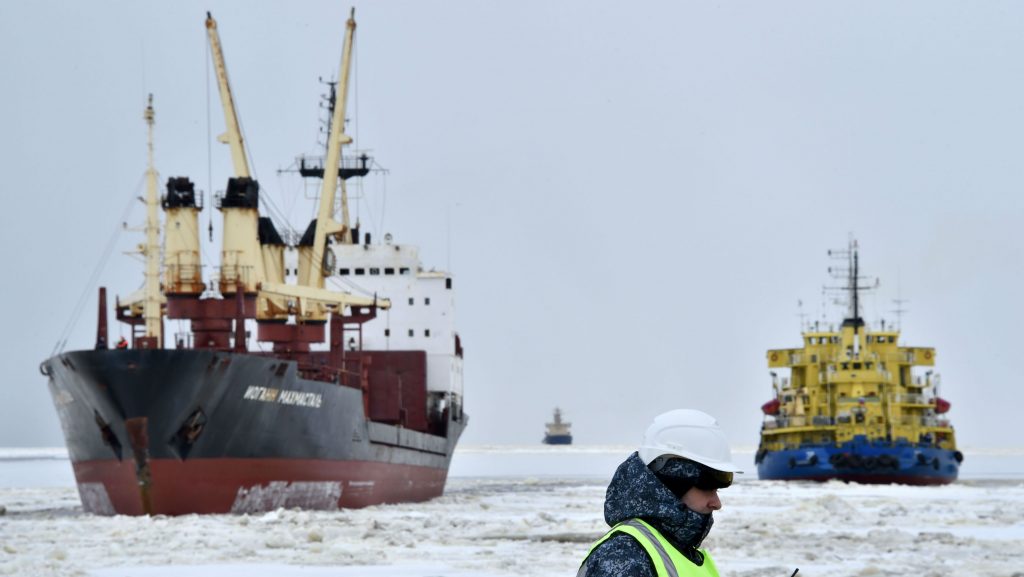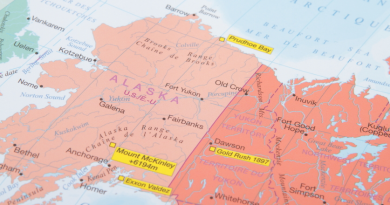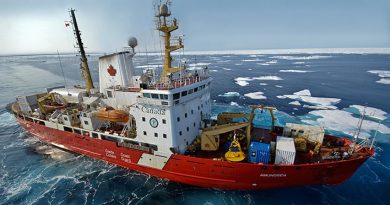Fossil fuels drive shipping boom along Northern Sea Route

Despite complicated ice conditions, more than 18 million tons of goods have been shipped along the Northern Sea Route in 2018, a 68% growth from 2017.
“It is an explosive growth,” Rosatom representative Maksim Kulenko underlined in a speech this week. According to Kulenko, about 18 million tons of goods has so far this year been shipped along the Northern Sea Route.
And next year, the volumes are expected to reach 30 million tons, he made clear, TASS reports.
The big growth comes despite this year’s very complicated ice conditions on parts of the route. Both in the Kara Sea and in the East Siberian Sea there were thick ice through major parts of early summer.
Maksim Kulenko is deputy head of state company Rosatom’s new department on the development of the Northern Sea Route (NSR). He spoke in a conference on the Arctic taking place in Moscow this week.
The company operates Russia’s nuclear-powered icebreaker fleet and is now taking the lead role in the development of Russian Arctic logistics. According to a new federal law, Rosatom is to have the top coordinating role in the management of the NSR.
“All the main operators of Arctic projects are now unequivocally giving priority to exports of their products along the Northern Sea Route,” Kulenko said.
The volumes of goods shipped on the route is about 68 percent higher than in 2017, which saw a total of 10.7 million tons of goods shipped.
Despite the overwhelming growth, transshipments on the route remain sparse. In 2017, less than 200,000 tons were shipped from the Europe to Asia through the Arctic shortcut. In 2018, the level of transcontinental shipping is likely to remain low.
The Northern Sea Route covers the waters between archipelago Novaya Zemlya, in Russia’s west-Arctic, and the Bering Strait, between Russia and Alaska.
Oil, LNG and coal
It is hydrocarbons that are the main drivers in the development. Novatek in November this year launched its third train of the Yamal LNG project and annual production has reached 16.5 million tons. The quickly growing fleet of LNG carriers are now shuttling to Sabetta, the project port in Yamal, to pick up the liquefied gas.
In addition comes a major growth in regional oil production. Gazprom Neft is increasing production at its Novy Port project in Yamal to an estimated 8 million tons this year, all of which is exported through the Gulf of Ob.
Over the next years, coal will also constitute a major share of the Russian Arctic shipping. VostokUgol and its subsidiary Arctic Mining Company plans to extract and export 30 million tons of coal per year from Taybass, the coal basin on the northern tip of Taymyr peninsula.
Unlikely to reach Putin’s target
Still, Rosatom and the natural resource developers in the Russian Arctic are unlikely to meet the target set by President Vladimir Putin.
In the comprehensive list of goals and strategic objectives handed over by the President to government following his re-inauguration in May this year is a boost in Northern Sea Route shipping to 80 million tons by 2024.
The decree followed Putin’s speech on the state of the nation in March. Putin then made clear that the Northern Sea Route must be turned into a global, competitive transport artery.
“The Northern Sea Route will be the key to the development of the Russian Arctic and the regions of the Far East. By 2025, its traffic will increase tenfold, to 80 million tons,” he underlined.
However, that is easier said that done.
The Russian Ministry of Natural Resources now silently acknowledges that Putin’s target might be too ambitious. In a conference last month, Ministry representative Sergey Khushchev made clear that he expects volumes on the Arctic route to amount to “only” 63 million tons by 2024.
“The issue of getting additional goods to the Northern Sea Route is critical,” he said.
Related stories from around the North:
Canada: Canada ill-prepared for Arctic shipping boom, G7 sustainability summit hears, Eye on the Arctic
China: China opens bids for its first nuclear-powered icebreaker, The Independent Barents Observer
Finland: Finland chooses Kirkenes in Norway for new Arctic railway terminal, The Independent Barents Observer
Norway: Russia’s Novatek says it found shipping partner for reloading Arctic LNG in Norway, The Independent Barents Observer
Russia: Venta Maersk container ship successfully breaks through ice on Northern Sea Route, The Independent Barents Observer
Sweden: Swedish icebreaker reaches North Pole for climate study, Radio Sweden
United States: World maritime body approves first Arctic ship routing measures, Radio Canada International



